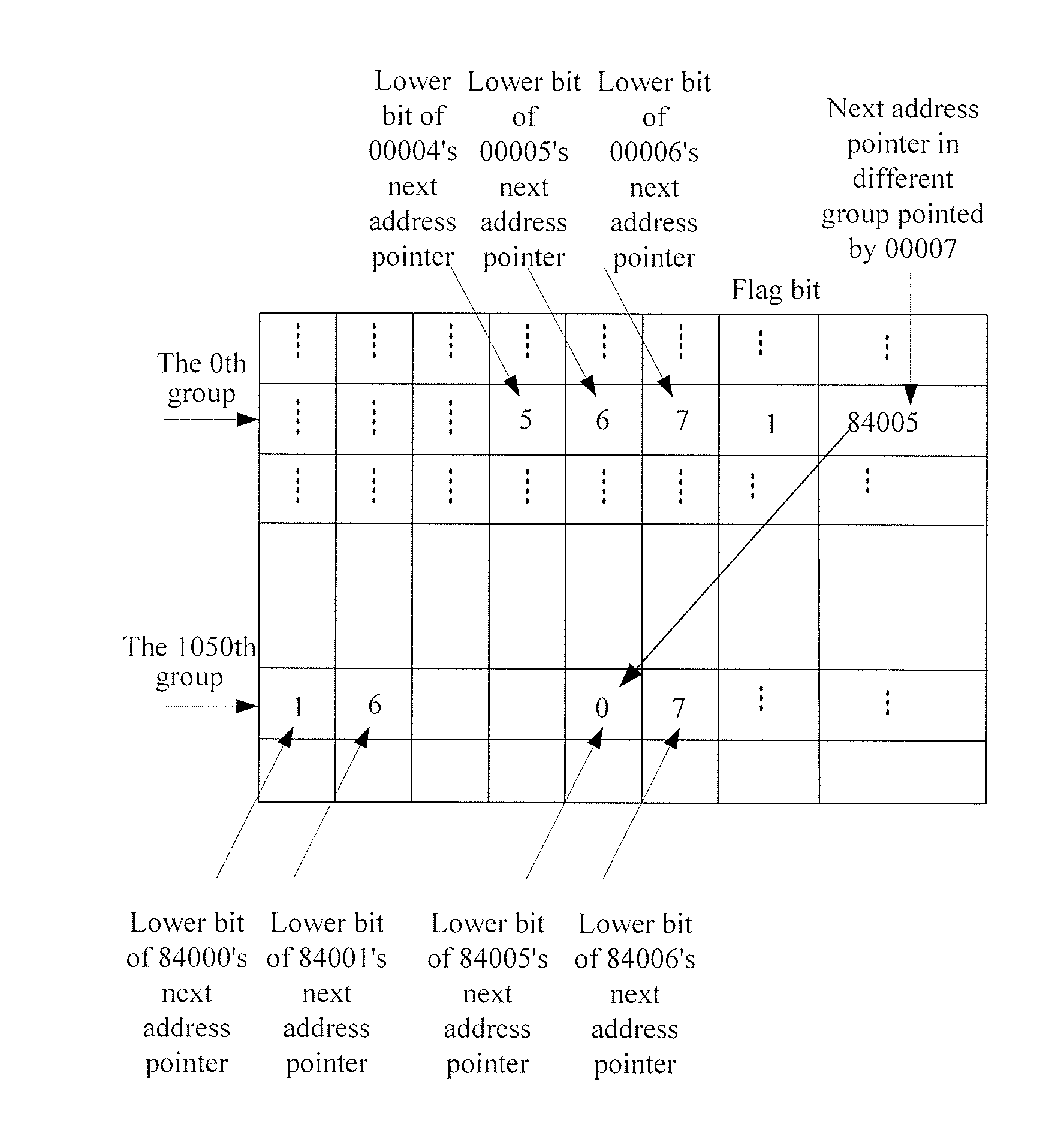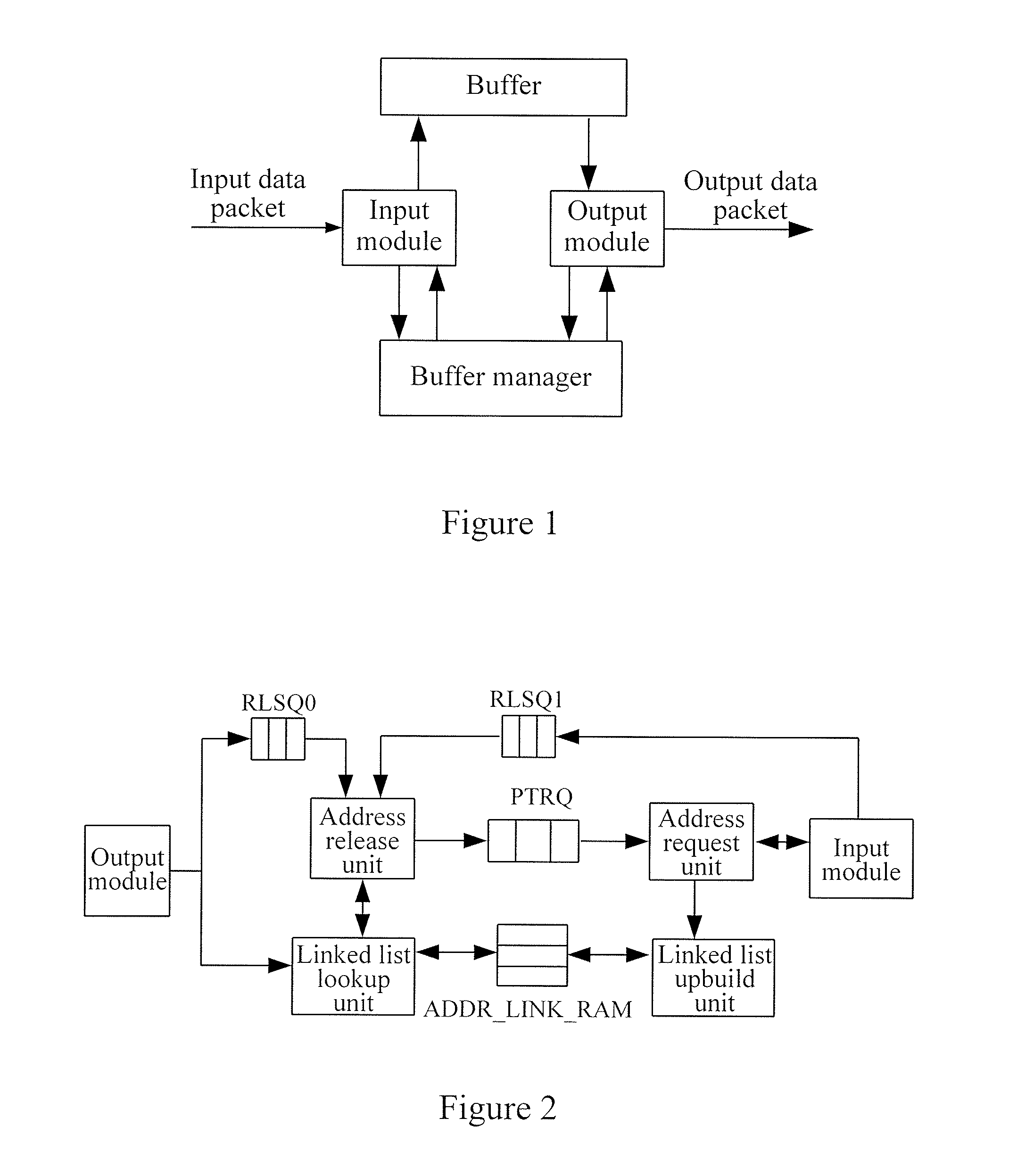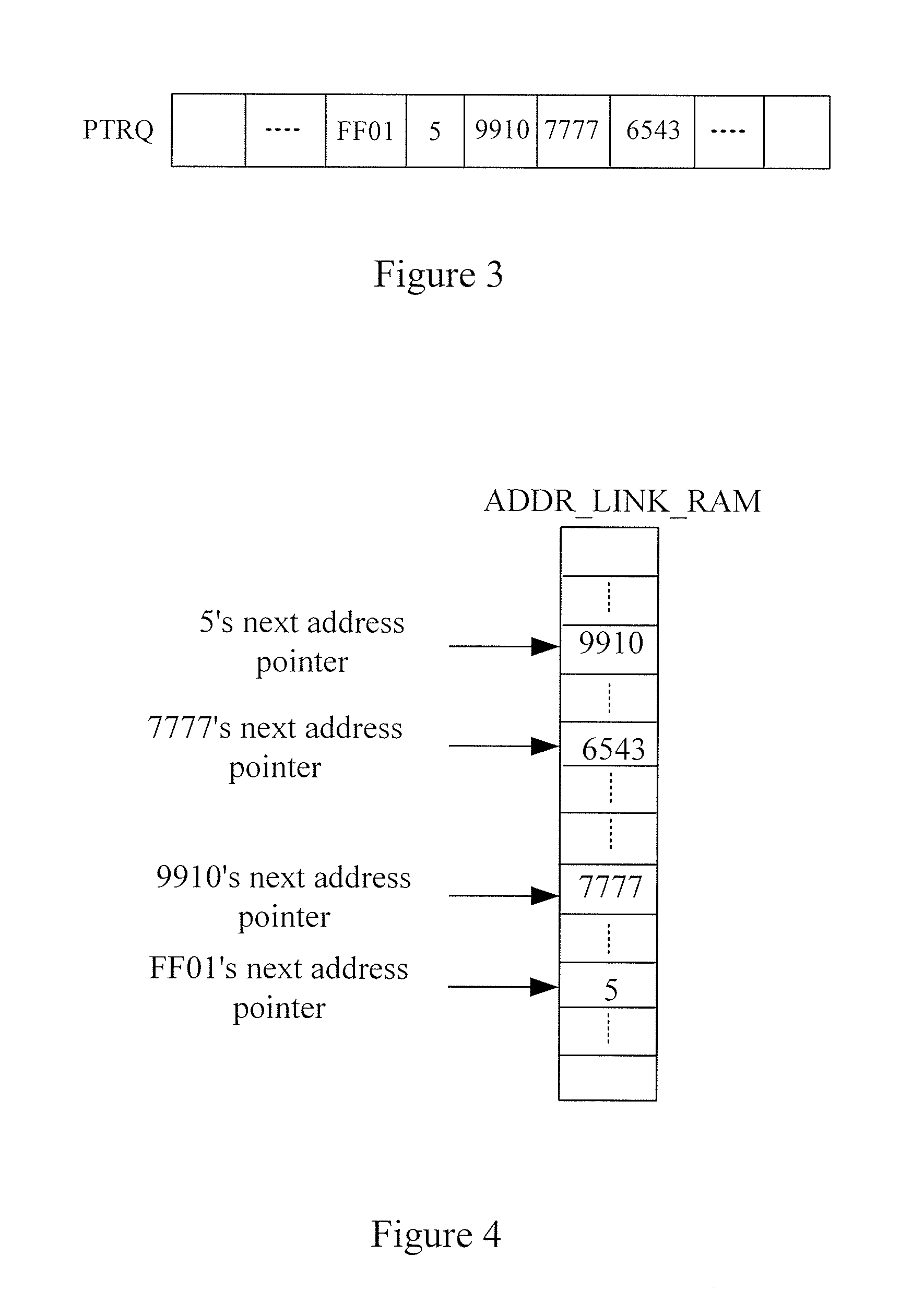Buffer manager and buffer management method based on address pointer linked list
a buffer manager and address pointer technology, applied in the field of buffer management technologies, can solve the problems of not being implemented by the fpga either, occupying a huge number of hardware resources by the fpga, and difficult for the fpga to provide such a huge number of resources, so as to reduce the amount of hardware resources, avoid abnomal packet loss, and increase the efficiency of address release
- Summary
- Abstract
- Description
- Claims
- Application Information
AI Technical Summary
Benefits of technology
Problems solved by technology
Method used
Image
Examples
Embodiment Construction
[0058]The present invention will be described hereinafter in detail with reference to accompanying drawings and embodiments.
[0059]FIG. 5 is a schematic diagram illustrating an internal logic structure of a buffer manager according to an embodiment of the present invention. As shown in FIG. 5, the buffer manager include the following.
[0060]An idle pointer unit, shown as PTR_VALID, is adapted to record idle address pointers of idle buffer blocks in a buffer. During initialization, all buffer blocks in the buffer are idle, and correspondingly, all address pointers are recorded in the idle pointer unit as the idle address pointers.
[0061]In the embodiment, in order to reduce hardware resources required by the idle pointer unit, the PTR_VALID shown in FIG. 5 is slightly different from the PTRQ shown in FIG. 2. Specifically, the PTR_VALID may just have 1-bit idle pointer indicators corresponding respectively to the address pointers of all the buffer blocks in the buffer one by one, or have...
PUM
 Login to View More
Login to View More Abstract
Description
Claims
Application Information
 Login to View More
Login to View More - R&D
- Intellectual Property
- Life Sciences
- Materials
- Tech Scout
- Unparalleled Data Quality
- Higher Quality Content
- 60% Fewer Hallucinations
Browse by: Latest US Patents, China's latest patents, Technical Efficacy Thesaurus, Application Domain, Technology Topic, Popular Technical Reports.
© 2025 PatSnap. All rights reserved.Legal|Privacy policy|Modern Slavery Act Transparency Statement|Sitemap|About US| Contact US: help@patsnap.com



